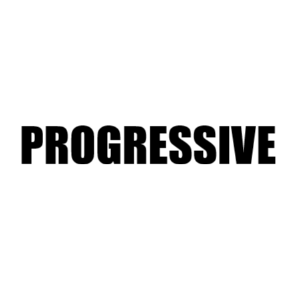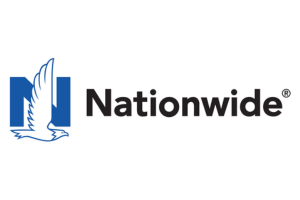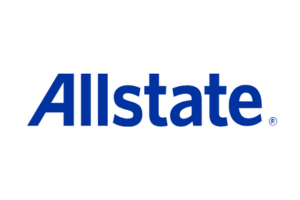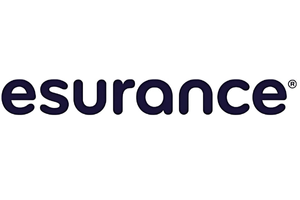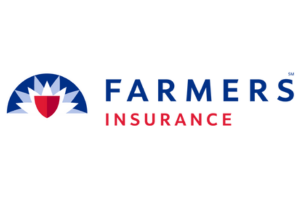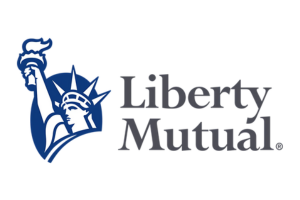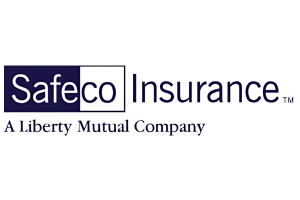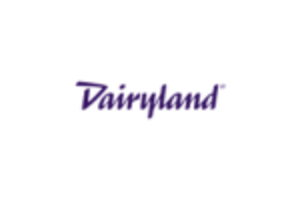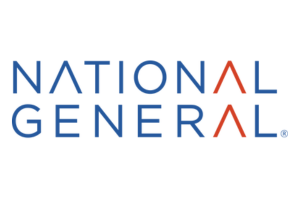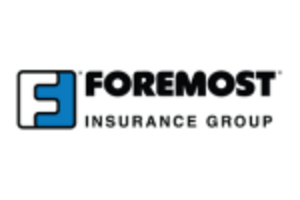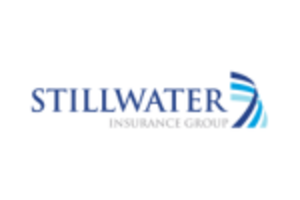Best Idaho SR-22 Insurance in 2026
What are Idaho SR-22 requirements?
SR-22 insurance in Idaho is required for drivers who are convicted of serious traffic violations. If your license has been suspended in Idaho, you may be asked to file a form called an SR22 before you can get it reinstated. SR stands for Safety and Responsibility, and as the name suggests, this is a requirement imposed on drivers who are considered high risk. In effect, the SR22 is proof of financial responsibility that shows to the state of Idaho your ability to bear financial liability in the event of an accident you cause. This process will reinstate your suspended driver's license and restore your driving privileges.
Although commonly known as SR-22 insurance, this is the name of the form that is submitted by your insurance company to the Department of Motor Vehicles telling them that you have purchased at least the minimum auto insurance coverage required of you. While SR-22 insurance is not actually a different type of insurance from typical car insurance, the term is often used to describe car insurance coverage for those who need an SR-22 endorsement because an SR22 affects your car insurance coverage and cost. In Idaho, SR-22 insurance after a DUI conviction costs an average of 40 percent more than car insurance for standard drivers.
The Idaho SR22 insurance is required of you if the DMV believes you are a high-risk driver. If you have several violations on your driving record or you are convicted of reckless driving, this could become a mandatory requirement for you.
The insurer not only has to inform the DMV when your SR-22 coverage is activated but also if you let the policy lapse by not paying premiums or not renewing the policy in time. If this happens, the insurer files an SR-26 form to let the DMV know that you are now driving without the mandatory coverage. A lapse in coverage can result in penalties and fees apart from the reinstatement of the suspension of your driver’s license. Or, at the very least, it can cause your premiums to increase, even higher than the typically expensive SR-22 insurance policies.
The SR-22 certificate is usually more expensive than standard car insurance policies due to the risk factor and severity of the driver's offense, which increases car insurance premiums. However, the car insurance provider may decline this type of coverage, as they may consider you a high-risk driver. So, those who manage to get an SR-22 policy, usually pay higher rates compared to drivers with a clean record.
If you don't own a car, it's a good idea to consider non-owner SR-22 insurance policy which gives you the minimum liability insurance coverage. It pays to shop around to find cheap car insurance in the state of Idaho.
Generally, the SR-22 needs to be filed and maintained for three years in Idaho. However, this duration depends on several factors, including the nature of the occurrence that prompted the requirement, your driving history, and your efficiency in maintaining your SR22 coverage throughout the mandated period. For example, if your license was suspended due to a DUI conviction, then your SR-22 has to be filed for the duration of the license suspension term.
In general, what you should also keep in mind is that a lapse in your SR-22 policy due to unpaid premiums or failure to renew the policy in time can escalate the cost of insurance you take even after the filing period is completed. To ensure that you do not face this problem, keep up with the payments and renewals on time.
Use our comparison tool to compare insurance quotes from multiple companies.
What are the SR-22 insurance limits in Idaho?
If you’re required to have SR-22 insurance in Idaho, you’ll be required to have at least the following coverage:
- Liability:
- $25,000 bodily injury per person
- $50,000 bodily injury per accident
- $15,000 property damage per accident
- Bodily injury caused by an uninsured/underinsured motorist:
- $25,000 per person
- $50,000 per accident
Who needs SR22 insurance in Idaho?
Traffic offenses that lead to SR-22 requirement differ from state to state. There are several different traffic violations that may lead to you needing to file an SR-22 in the state of Idaho. Some of these include:
- DUI or DWI convictions
- Reckless driving/speeding violations
- Inability to show insurance/license to authorities when asked
- Driving with a revoked or suspended license
- Too many tickets on your driving record
Apart from these, there are some violations that aren’t driving or traffic-related that may also require you to file an SR-22 in Idaho. For example, if you have failed to pay child support, you may need to file an S22. Minor violations do not require SR-22 insurance.
How are Idaho SR-22 insurance rates calculated?
Because the SR-22 is a requirement imposed on a high-risk or non-standard driver, you should expect your auto insurance rates to increase. High-risk drivers tend to pay the highest car insurance rates, but the cost of car insurance can vary by company and state. There are many other factors that go into the cost of SR-22 insurance in Idaho, such as your age, gender, ZIP code, credit score, motor vehicle type, marital status and so on. Additionally, there may be some insurers who won’t take on the risk to insure you, so you might have to search around to find an insurer that not only offers this coverage, but also does so at the best possible price.
One of the most common reasons drivers need SR-22 insurance is because of a DUI conviction. On average, drivers with one DUI conviction in Idaho pay $1,171 per year for car insurance. That’s 40 percent more than car insurance for a driver with a clean driving record. However, the insurance cost you pay differs significantly based on the company you buy car insurance from. In the table below, you can find average rates for Idaho drivers who have one DUI conviction from some of the largest companies in the state.
| Company | Car insurance rate |
|---|---|
| USAA* | $772 |
| State Farm | $850 |
| Safeco | $899 |
| Farmers | $947 |
| The Hartford | $1,026 |
| Geico | $1,111 |
| American Family | $1,191 |
| Nationwide | $1,326 |
| Idaho Farm Bureau | $1,447 |
| Auto-Owners | $1,451 |
| Allstate | $1,808 |
*USAA is only available to active and former military members and their families.
These rates are based on a 35-year-old single adult with one driver and one vehicle on a policy. The car used was a 2015 Toyota Highlander LEs. Full coverage was used with 100/300/50 limits and a $500 collision and comprehensive deductible. The driver had 1 DUI on their record. The rates displayed should only be used for comparative purposes as individual rates for high-risk insurance in Idaho will differ. Rate data is provided by Quadrant Information Services.
How to get SR22 insurance in Idaho?
To get SR22 insurance, you’ll need to contact your car insurance company. An SR-22 can only be obtained through an insurance carrier; you can’t file it on your own. If your auto insurance company offers insurance coverage to drivers who need an SR-22, your company can file the form with your state and offer you car insurance coverage. If not, you’ll need to shop for a new insurance policy from a company that offers SR22 insurance coverage.
Even if your company does offer SR22 insurance in Idaho, it may be a good idea for you to shop around for a new policy. Because SR-22 car insurance significantly affects your rates in Idaho and rates can vary by company, you may want to see if a different company can offer you a better rate.
Use the table at the top of this page to find all the car insurance companies that offer SR-22 insurance in Idaho with a minimum of 25 reviews. If you want to see which companies customers say are the best car insurance companies for SR22 insurance in Idaho, sort the table by highest rated. You can sort through companies and find the ones you want to get quotes from. To get quotes, click on the orange “Click for quote” button next to the company, call the number available, or visit the company’s website.
If you want to read customer reviews of the company, click the company name in the table and you will be directed to the company’s profile page containing information about the company and reviews.
Are there any SR-22 fees in Idaho?
In addition to higher car insurance rates, you may be required to pay a fee to your insurance company to file the SR-22. The filing of the SR-22 form is done by your insurer, but to do this, they charge you a filing fee. The SR-22 filing fee may range from $25 to $50, depending on the insurer you choose.
You’ll likely have additional fees you’ll be required to pay depending on the violation you’ve committed. If your Idaho drivers license was suspended or revoked, you’ll need to pay a reinstatement fee before you can get it back. If you committed a DUI, you should expect many fees. Idaho DUI fines can be up to $5,000, depending on the severity of your conviction and if you’ve been convicted before. For your first DUI offense, the fine you’ll have to pay is $1,000. There are also additional requirements if you’ve been convicted of a DUI.
How are car insurance rates calculated?
When searching and comparing car insurance quotes, it can be frustrating trying to understand how your insurance rates are calculated. While there is no exact formula that each car insurance company uses when providing you a quote, there are many factors that do contribute to the price you pay for your insurance. Among the factors that car insurers consider are:
- Your driving record
- How much you drive
- Location
- Age
- Marital status
- Gender
- Your car’s make, model and year
- Your credit history (in some states)
- Amount of car insurance coverage (required coverage and optional add-ons, such as collision and comprehensive)
One of the biggest misunderstanding when it comes to insurance rates is that the history of drivers in your area also contributes to how much you pay. For instance, even if you go two years without an accident, if there were a lot of accidents near you recently, your rates might still go up. Why is that the case?
Insurance companies disperse risk across all policyholders so that when it comes time to pay a claim, they have enough money to pay out. But imagine a scenario where they only raised rates for drivers with an accident. For drivers who had an expensive claim, the drivers simply wouldn't be able to afford the raised rates that are based off how much their insurer had to pay after an accident. So instead, insurance companies slightly increase rates across the board to offset the costs, though of course the at-fault driver may see a larger increase.
How much car insurance do I need?
You certainly don’t want to be underinsured or uninsured while staring at a claim after a car accident or other damage to your car. But at the same time, there’s no sense in paying for more coverage than you need, right? So it begs the question: How much car insurance coverage do you actually need?
The answer, as frustrating as it may be, is it depends. For example, someone insuring a brand-new, leased car is likely required to purchase collision and comprehensive coverage, but for someone driving an older car that doesn’t have much value, it may not make sense to purchase optional coverage. Plus, states have different car insurance requirements. There are 12 no-fault states that require its drivers to purchase personal injury protection (PIP).
So when it comes to determining what car insurance coverage and limits you should purchase, it’s important to do your research. Talk with an insurance agent or your insurance company to determine what makes the most sense for your situation.
How to save money on your car insurance?
At the end of the day, we’d all like to have the best coverage at a cheap, affordable price. While you never want to sacrifice quality to save a couple of dollars, there are some different ways you can lower your car insurance premium.
Here are six ways you may be able to lower your car insurance rates:
- Bundle your car insurance with other policies
- Consider raising your deductibles
- Pay your car insurance policy in full
- Try usage-based car insurance
- Monitor price changes to your policy
- Shop for better insurance rates
How do we rank car insurance companies?
Wondering how Clearsurance determines scores for insurance companies? Our algorithm analyzes a range of inputs from our community of unbiased insurance customers, including:
- Cost
- Customer Service
- Overall Experience
- Claim service
- Purchasing experience
- Likelihood to recommend
Car Insurance Guide
Whether you’re buying your insurance direct or going through an agent, understanding the different car insurance coverage options is a must. Do you know what is covered by comprehensive coverage? Are you familiar with uninsured motorist coverage/underinsured motorist coverage? Do you know how a deductible works?
We want to make sure you’re equipped with a proper knowledge of car insurance, so check out our practical guide to understanding car insurance. Looking for more educational information about car insurance? Check out our blog for more information and topics related to car insurance.
